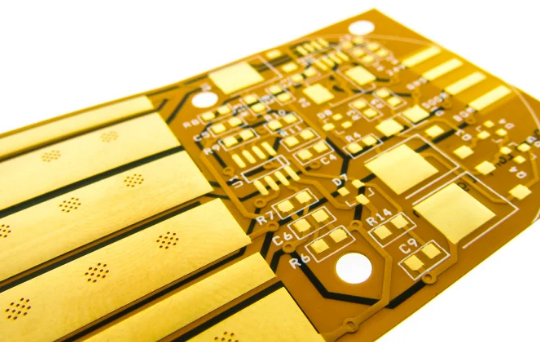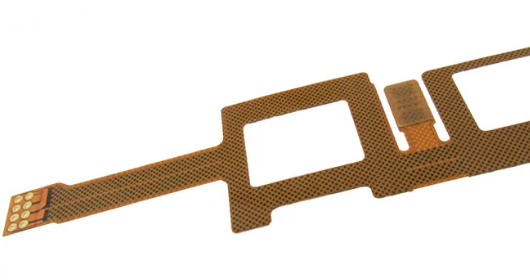EMI SHIELDING: PROTECTING FLEX CIRCUITS FROM NOISE
The integrity of electronic circuits is paramount to the flawless operation of devices we rely on daily. One pervasive challenge continually disrupts this harmony: Electromagnetic Interference.
EMI is not just a technical nuisance; it's a potent force capable of degrading the performance of electrical circuits, elevating error rates, generating significant noise within signals, or in severe cases, causing total data loss. Imagine the chaos if the electronics in medical devices, smartphones, or aerospace navigation systems faltered due to EMI!
Understanding EMI is the first step in mitigating its effects. EMI is a disturbance generated by an electrical source affecting another circuit through electromagnetic induction, electrostatic coupling, or conduction. The repercussions? Compromised device functionality or outright failure. However, this challenge is one that has been studied and examined over many years within the industry, finding a straightforward solution that can be easily incorporated into many designs. In this case, the answer to our problems is shielding — a simple, yet elegant, defense mechanism implemented at the circuit level.
Why Circuit-Level Shielding?
Shielding at the circuit level is not just a strategy; it's a cost-effective solution and precaution. By applying shielding closest to the sensitive circuits, we significantly reduce the overall cost of protection. But how do we implement this shield? Let's explore three innovative methodologies that stand out in their defense against EMI.
Copper Layers
Copper layers are the stalwarts in EMI shielding and by and large the easiest and most common solution. By adding extra copper layers around the critical signals, we create a protective encapsulation, mirroring strategies used in rigid PCB designs. These copper shields, preferably solid for their total protection, are interconnected to the ground circuit via a row of via holes flanking either side, crafting a near-impenetrable cage against EMI. Yet, flexibility is a consideration; thus, cross-hatching is employed, when necessary, though with a nod to the potential compromise in shielding effectiveness and in limited amounts.

Flexible circuit board manufactured with copper shields.
Silver Ink
Silver ink shielding takes a more artisanal approach. This method involves screening a layer of silver epoxy ink onto the external surfaces of the primary coverlay, then encapsulating it with a secondary coverlay. The silver ink forms a conductive pathway to the ground through the coverlay openings and vias, ensuring the shield does not float aimlessly.
While this method adds complexity, time, and cost due to additional processing steps and materials, its legacy in EMI shielding speaks to its effectiveness and reliability. Unfortunately, to this day, silver ink has been slowly phased out in favor of copper layers and shielding films due to its limitations for high density component areas and a driving need for thinner flex circuits.
Shielding Films
Emerging from the need to protect the delicate electronics of flip phones from EMI, shielding films have become the vanguard in flexible circuit protection. Comprising an electrically conductive adhesive, a metallic deposition layer for shielding, and an outer insulating flexible epoxy, these films offer a comprehensive solution, all while maintaining a thin profile and cost-effectiveness.

Flexible circuit board manufactured with shielding films.
They connect to the ground in a similar fashion to silver ink but require no secondary coverlay, thanks to their built-in insulation layer. This not only simplifies the application process but also enhances their capabilities, making them ideal for a wide array of applications, including the challenging terrains of rigid-flex circuits. However, this film is not a perfect solution, causing situations such as stiffener adhesion to require alternative solutions like pressure sensitive adhesives to adhere them rather than typical stiffener lamination procedures.
Ensuring Reliability And Flexibility
The journey doesn't end with selecting the right shielding methodology. Ensuring that the final product can withstand the rigors of its application, especially in flexible designs, is crucial. For instance, in flex circuits, the incorporation of via holes to stitch shielding layers together needs a careful balance to maintain flexibility and prevent stress concentrators that could lead to cracks. Adherence to design standards, such as IPC 2223 for flex and rigid-flex, and conducting thorough bend requirement reviews, are vital steps in this process.
Summary
As we delve deeper into the era of ubiquitous electronics, the battle against EMI will only intensify and spread. The methodologies discussed — copper layers, silver ink, and shielding films — represent our arsenal in this ongoing fight. Each brings its unique strengths to the table, from the robustness of copper layers to the flexibility of shielding films.
By integrating these solutions into our circuit designs, we not only protect against EMI but also ensure the reliability and longevity of electronic devices that have become indispensable in our lives. The future of technology is shielding, thanks to these ingenious solutions, preserving our circuits and designs against the pervasive and continuing problems that can arise from electromagnetic interference.
Capabilities
Payment Methods
Specials Price
Carriers
Support Hobbyist
Certificate
Customer Support
Follow Us
Tel: 1-905-339-2881
Email: sales@goldphoenixpcb.com , tech@goldphoenixpcb.com
Copyright Gold Phoenix PCB Co., Ltd. 2011 - 2025
Tel: 1-905-339-2881 Email: sales@goldphoenixpcb.com , tech@goldphoenixpcb.com
Quality Control System
|
Products/Service
|
Friendly Links
Copyright Gold Phoenix PCB Co., Ltd. 2011 - 2025


